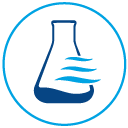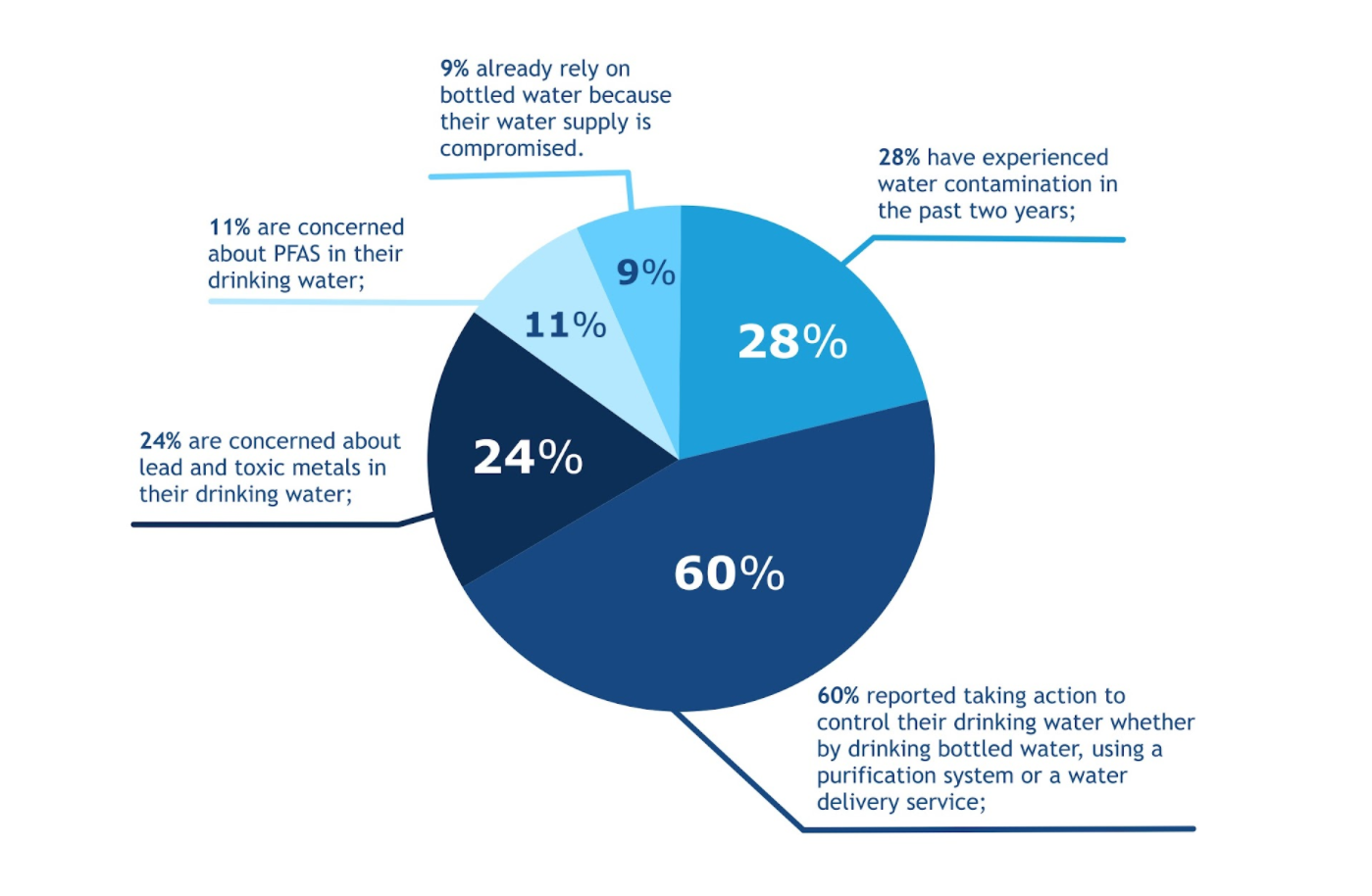
Know the Distinction Between a Lab Water Test and Home Water Test
1. Introduction to Water Testing
Drinking water is an essential component of a healthy life. While many people have already turned to bottled water for drinking, many more people are questioning the safety of drinking water directly from their home taps. News reports have highlighted lead poisoning, bacterial contamination, natural disasters that overwhelm municipal water sources and other chemical pollutants that have been found in tap water. These very concerning events have caused many of us to question the safety of drinking our own water from home.
The following chart is what a 2019 Survey of water contamination in the U.S. by Bluewater revealed:
The good news is that there are great water quality testing techniques that can identify a wide range of potentially dangerous contaminants. When you know how to do water testing at home you will be able to ensure the purity of your water and the long term health and safety for you and your family.
2. Different types of water quality tests
Perhaps the most important thing to know when you are discovering how to do water testing at home is, what the best options available to you are. Technology for drinking water testing has vastly improved over the years and there are a wide range of home tests you can perform and get instant results for a variety of different contaminants.
If what you discover with a home test is concerning to you, or if you want to get all the very best information possible about your water, certified laboratory testing is capable of identifying far more contaminants, and will identify them even at extremely low levels of contamination.
Costs for any of these tests will vary depending on how many contaminants you want to test for how quickly you want the results and what kind of report of the results you want or need.
3. Home water testing
Of the two main water quality testing techniques, home test kits are the simplest and the least expensive. They can identify a single contaminant or a variety of contaminants depending on what you want to test for and what your water testing budget is.
Most of these home kits include easy to use directions on how to do water testing at home. They also supply testing strips that you will dip into sterilized tubes filled with your drinking water. Each strip contains a chemical reagent that reacts with a specific contaminant and will change color if that contaminant is present. The greater the quantity of the contaminant the darker the color on the strip. Easy to read charts are available for color comparison to help you identify the level of contamination. and whether it is dangerous or within an acceptable range.
Depending on the tests you order your strips may test for a single contaminant or up to four different contaminants per strip. The more pollutants you want to test for, the more strips and sterile tubes you will be provided, and the wider the range of potential contaminants you can either identify as present or rule out. These strips are capable of identifying toxic metals, pesticides, long lasting chemicals or bacteria in your water.
4. Laboratory water testing
The second main option is to send samples of your drinking water for laboratory tests. Once you identify a reputable and certified lab, you can contact them and discuss what kinds of tests you want to have done. The lab will send you a sample collection kit with clear directions on how to take samples, pack them back in the box and return them to the lab for testing.
It is also important to know that lab tests are the best option when testing for difficult to identify contaminants like arsenic, glyphosate, nitrate and certain bacteria strains.
These lab tests take more time and are more expensive, however, their engineers are exceedingly qualified and experienced and will provide you with a complete report of your water quality. The best labs will also help you understand what your report results mean, walk you through options for improving your water quality, and guide you to experts in the field who will provide you with the very best results.
5. Conclusion
If you have questions about how to do water testing at home or with a lab, Torrent Laboratory offers superior water testing. We employ EPA-approved methods and services that meet all of the quality control as well as analytical and documentation requirements demanded by California regulating authorities. We have decades of experience with water quality testing techniques and a team of chemists with a combined 150 years of analytical experience. Our final reports contain federal guidelines so that you can compare your water quality data. We even offer pre-analysis consultations to determine your specific concerns and needs.
Test with the best. Learn more about our testing capabilities by visiting our website and filling out a Water Quality Testing Form.







